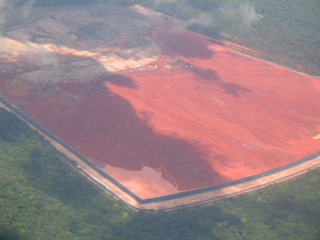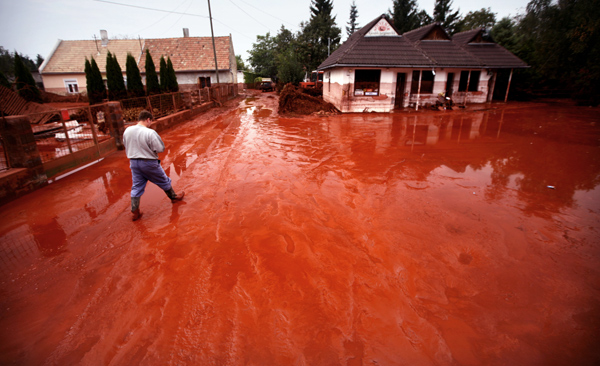Apr 12 2011
People Can’t be Made to Bathe in Red Mud
Felix Padel/ Samarendra Das
First Published : 20 Oct 2010 on Expressbuzz.com
When news spread that the red mud pond in a Hungarian alumina refinery had broken open on October 3 [2010], spilling toxic sludge over a huge area, killing people and livestock, this confirmed our worst fears regarding new refineries going up in Orissa [India] and neighbouring states. For Hungarians a nightmare scenario has begun, as their country faces to its worst-ever environmental disaster. Apart from villagers killed or maimed by the toxic sludge, many farmers face economic ruin, as their fields are contaminated beyond repair. How much worse would a similar disaster be in India, where the population density of farmers is much higher? Read More

 The disastrous chemical accident has been declared Hungary’s largest and most dangerous environmental catastrophe, exceeding by far the 130000 cubic meters of cyanide-tainted water that spilled in 2000 in Baia Mare, Romania. Ten years later, traces of cyanide are still found in the area. It is worth noting that this cyanide was in a liquid form, therefore very quickly carried aways by the river whereas the thick red mud will sit there for years, sipping into the ground and reaching ground waters.
The disastrous chemical accident has been declared Hungary’s largest and most dangerous environmental catastrophe, exceeding by far the 130000 cubic meters of cyanide-tainted water that spilled in 2000 in Baia Mare, Romania. Ten years later, traces of cyanide are still found in the area. It is worth noting that this cyanide was in a liquid form, therefore very quickly carried aways by the river whereas the thick red mud will sit there for years, sipping into the ground and reaching ground waters.